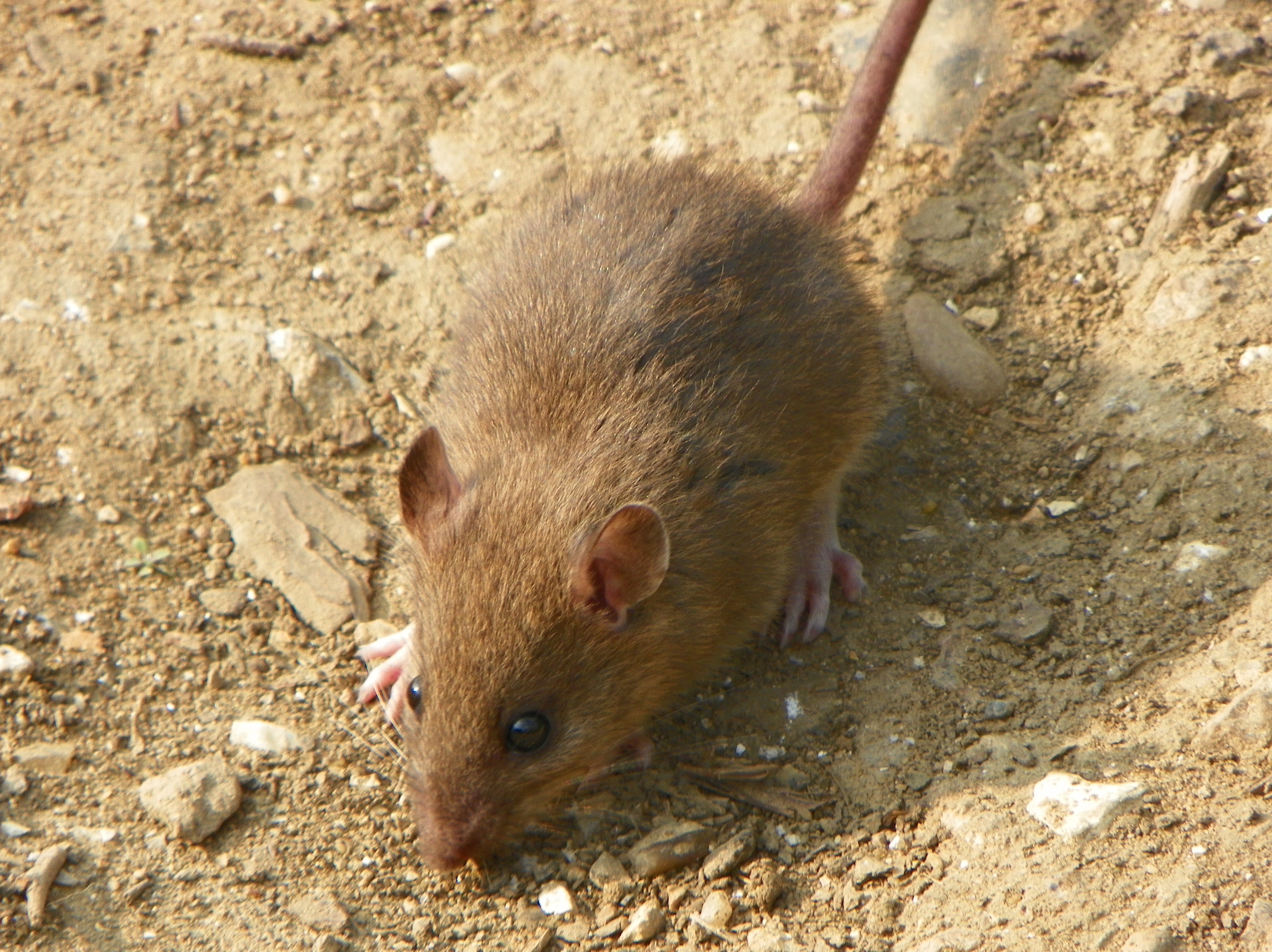The best way to remove rats from your home is a combination of sanitation, exclusion, and trapping.
Imagine this You’re sitting in your living room, enjoying a quiet evening, when you hear a strange rustling noise coming from the kitchen. You brush it off at first, thinking it’s just the wind or maybe the house settling.
But then you hear it again, louder this time. You get up to investigate, only to find yourself face-to-face with the unwelcome sight of a rat scurrying across the floor. It’s the stuff of nightmares, right?
If you’ve ever had a similar experience, you know how unsettling it can be. Rats aren’t just a nuisance; they can cause significant damage to your home and pose serious health risks. But don’t worry, I’ve got your back.
In this guide, I’m going to walk you through the best ways to remove rats from your home, from immediate action steps to long-term prevention strategies. So, grab a cup of coffee, settle in, and let’s tackle this rat problem head-on!
Key Takeaways
- Cleanliness is crucial: Keep your home free of food debris and clutter.
- Seal all entry points to prevent rats from getting inside.
- Use effective traps and know how to set them up correctly.
- Consider natural remedies, but understand their limitations.
- Know when to call in professional pest control.
- Maintain long-term prevention habits to keep your home rat-free.
Identifying the Rat Problem
Alright, now that we’ve set the stage, let’s get into the nitty-gritty of identifying whether you actually have a rat problem. Sometimes, the signs can be subtle, and you might not even realize you’ve got unwelcome guests until it’s too late. But fear not! Here are some telltale signs to look out for:
Noises in the Walls or Attic
If you hear scratching, scurrying, or gnawing sounds coming from your walls, ceiling, or attic, it’s a good indication that rats have moved in. These nocturnal critters are most active at night, so pay attention to any strange noises after dark.
Droppings and Urine Odor
One of the most obvious signs of a rat infestation is the presence of droppings. Rat droppings are small, dark, and pellet-shaped. You’ll typically find them near food sources, in cupboards, or along baseboards. Additionally, a strong, musky odor can indicate the presence of rat urine, which they use to mark their territory.
Gnaw Marks and Damage
Rats need to constantly gnaw on things to keep their teeth sharp and healthy. Look for gnaw marks on furniture, wires, food packaging, and even structural elements like wooden beams. Damaged goods in your pantry or chewed-through cables are red flags.
Nests and Burrows
Rats build nests out of shredded paper, fabric, and other soft materials. Check behind appliances, in the attic, basement, and other hidden areas for nesting materials. Outdoors, look for burrows along your foundation or under bushes and debris.
Grease Marks and Tracks
As rats travel along their established routes, they leave behind greasy smudges from their fur. These marks are often found on walls, floors, and other surfaces they frequently travel across. You might also see footprints or tail drag marks in dusty areas.
Seeing a Rat
If you actually see a rat, whether dead or alive, it’s a sure sign you’ve got an infestation. Rats are elusive and prefer to stay hidden, so spotting one means there are likely many more hiding out of sight.

Sanitation: The First Step
Alright, now that we’ve identified the signs of a rat problem, it’s time to roll up our sleeves and tackle the first crucial step: sanitation. Believe it or not, keeping a clean and tidy home is one of the most effective ways to deter these pesky invaders. Let’s break it down
Eliminate Food Sources Rats are opportunistic feeders, which means they’ll eat just about anything they can find. To make your home less appealing to them, start by eliminating their food sources. This means:
- Store Food Properly: Keep all food in airtight containers, including pet food. Don’t leave food out on counters or in easily accessible places.
- Clean Up Crumbs and Spills: Regularly clean your kitchen, dining area, and anywhere else you eat to ensure there are no crumbs or spills left behind. Pay special attention to hard-to-reach places like under appliances.
- Take Out the Trash: Dispose of garbage regularly and make sure your trash cans have tight-fitting lids. Rats can easily tear through plastic bags, so don’t leave them sitting out.
Declutter Your Home Rats love clutter because it provides them with plenty of hiding spots and nesting materials. To make your home less inviting:
- Organize Storage Areas: Keep storage areas like basements, attics, and garages organized and clutter-free. Use plastic bins with secure lids instead of cardboard boxes.
- Reduce Piles: Avoid leaving piles of newspapers, magazines, or other paper products lying around. Rats will shred these materials to build their nests.
- Trim Vegetation: Outside, keep your yard tidy by trimming overgrown vegetation and clearing away debris. This will reduce potential hiding spots for rats.
Regular Cleaning Routine Maintaining a regular cleaning routine is key to keeping rats at bay. This includes:
- Sweeping and Vacuuming: Regularly sweep and vacuum floors to remove food particles and debris. Don’t forget to clean behind and under appliances.
- Wiping Down Surfaces: Clean countertops, tables, and other surfaces daily to remove food residues. Use disinfectants to eliminate any scent trails left by rats.
- Washing Dishes Promptly: Don’t leave dirty dishes sitting in the sink overnight. Wash them promptly to avoid attracting rats.
Yard Maintenance Your yard can also be a potential haven for rats, so it’s important to keep it well-maintained:
- Secure Compost Bins: If you have a compost bin, make sure it’s rodent-proof. Avoid composting meat, dairy, or oily foods that can attract rats.
- Store Firewood Properly: Keep firewood stacks at least 18 inches off the ground and away from your home. Rats love to nest in wood piles.
- Remove Standing Water: Eliminate any standing water sources, such as birdbaths or clogged gutters, as rats need water to survive.
Sealing Entry Points
Alright, you’ve cleaned up your home and removed potential food sources. Now, let’s focus on sealing those pesky entry points that rats use to sneak into your home. Rats can squeeze through surprisingly small gaps, so it’s essential to be thorough. Here’s how to do it:
Inspect Your Home Thoroughly Start by conducting a detailed inspection of your home, both inside and out. Look for any gaps, cracks, or holes that could serve as entry points for rats. Common areas to check include:
- Around Doors and Windows: Check for gaps around doors and windows. Even small spaces can be enough for a rat to squeeze through.
- Foundation and Walls: Look for cracks or holes in the foundation and walls of your home. Pay special attention to areas where utility pipes enter the building.
- Roof and Attic: Inspect the roof and attic for any openings, such as vents, eaves, or chimney gaps. Rats are excellent climbers and can easily access these areas.
Seal Gaps and Cracks Once you’ve identified potential entry points, it’s time to seal them up. Use the following materials and methods:
- Steel Wool: Stuff steel wool into small holes and gaps. Rats can’t chew through it, making it an effective barrier.
- Caulk: Use caulk to seal smaller cracks and gaps around windows, doors, and utility pipes. Make sure to use a high-quality exterior caulk for outdoor applications.
- Hardware Cloth: For larger openings, use hardware cloth (a type of wire mesh) to cover gaps. Secure it in place with screws or nails.
- Expanding Foam: For irregularly shaped gaps, expanding foam can be used to fill and seal the space. Be sure to trim any excess foam once it hardens.
Install Door Sweeps and Weather Stripping Rats can easily slip under doors if there’s enough space. To prevent this:
- Door Sweeps: Install door sweeps on the bottom of exterior doors to close any gaps. Make sure the sweep fits snugly against the floor.
- Weather Stripping: Apply weather stripping around doors and windows to seal any remaining gaps. This not only helps keep rats out but also improves your home’s energy efficiency.
Secure Vents and Chimneys Vents and chimneys are common entry points for rats. Here’s how to secure them:
- Vent Covers: Install vent covers or screens on exterior vents to prevent rats from entering. Make sure the covers are made of durable material that rats can’t chew through.
- Chimney Caps: Place a chimney cap on your chimney to keep rats and other animals out. Chimney caps also help prevent water and debris from entering your chimney.
Maintain Your Barriers Sealing entry points isn’t a one-time task. Regularly inspect your home to ensure that your barriers remain intact. Weather, wear and tear, and other factors can create new gaps over time, so it’s important to stay vigilant.
Trapping and Removal
Now that your home is clean and secure, it’s time to deal with any rats that may have already made themselves comfortable. Trapping is an effective method to remove these unwelcome guests. Let’s dive into the different types of traps and how to use them effectively:
Snap Traps Snap traps are the classic and most commonly used type of rat trap. They work by snapping shut on the rat when triggered. Here’s how to use them:
- Placement: Place snap traps along walls, behind appliances, and in other areas where you’ve noticed rat activity. Rats tend to run along walls, so positioning traps here increases your chances of success.
- Bait: Use bait that rats find irresistible, such as peanut butter, bacon, or dried fruit. Secure the bait to the trap to ensure it doesn’t get knocked off without triggering the trap.
- Setting: Carefully set the trap according to the manufacturer’s instructions. Be cautious of your fingers while setting, as these traps can snap shut quickly.
Live Traps Live traps allow you to catch rats without killing them. These traps are ideal if you prefer a humane approach:
- Placement: Similar to snap traps, place live traps along walls and in areas where rats are active.
- Bait: Use the same baits as for snap traps, ensuring the bait is securely placed inside the trap.
- Setting: Follow the instructions to set the trap properly. Once a rat is caught, release it at least a mile away from your home to prevent it from returning.
Electronic Traps Electronic traps deliver a quick, humane electric shock to kill rats. They are easy to use and highly effective:
- Placement: Position electronic traps in high-traffic rat areas, following the same guidelines as for other traps.
- Bait: Place bait inside the trap to lure rats in.
- Setting: Set the trap according to the manufacturer’s instructions. Most electronic traps have indicator lights to show when a rat has been caught and killed.
Glue Traps Glue traps are less commonly used due to their inhumane nature, but they can be effective in certain situations:
- Placement: Place glue traps along walls and in areas where rats are known to travel.
- Bait: Some glue traps come pre-baited, but you can also add additional bait to attract rats.
- Monitoring: Check glue traps frequently to ensure any caught rats are dealt with promptly. Dispose of the trap and rat according to local regulations.
Using Traps Effectively To maximize the effectiveness of your traps, follow these tips:
- Multiple Traps: Use multiple traps to increase your chances of catching rats. Place them in strategic locations around your home.
- Check Regularly: Check your traps daily to remove caught rats and reset or replace traps as needed.
- Safety First: Keep traps out of reach of children and pets to prevent accidental injury.
Dealing with Caught Rats Once you’ve caught a rat, it’s important to handle it safely:
- Gloves: Always wear gloves when handling traps and disposing of rats to protect yourself from diseases.
- Disposal: Dispose of dead rats in sealed plastic bags and place them in an outdoor trash bin. Clean and disinfect the trap before reusing.
- Release: If using live traps, release the rat far from your home to ensure it doesn’t return.
Natural and Home Remedies
Alright, we’ve tackled cleaning, sealing, and trapping, but let’s not stop there. If you’re looking for additional, more natural ways to deter rats, there are several home remedies worth trying. While these methods might not be as immediately effective as traps, they can complement your overall strategy and help keep rats at bay.
Peppermint Oil Peppermint oil is a popular natural repellent due to its strong scent, which rats find overwhelming.
- How to Use: Soak cotton balls in peppermint oil and place them in areas where you’ve seen rat activity, such as near entry points, in cupboards, and along baseboards.
- Effectiveness: While peppermint oil won’t solve a severe infestation, it can be a useful deterrent when combined with other methods.
Ultrasonic Repellents Ultrasonic repellents emit high-frequency sound waves that are unpleasant for rats but inaudible to humans and pets.
- How to Use: Plug these devices into outlets in various rooms, especially where rats are most active.
- Effectiveness: Results can vary, but many homeowners find ultrasonic repellents to be a helpful part of a comprehensive rat control plan.
Ammonia Ammonia mimics the scent of predator urine and can scare rats away.
- How to Use: Mix a solution of equal parts water and ammonia, and place it in small dishes around your home, particularly near suspected entry points.
- Safety Note: Use ammonia with caution, keeping it out of reach of children and pets, and ensure proper ventilation in the areas where you place it.
Mothballs Mothballs contain naphthalene, which rats find repellent.
- How to Use: Place mothballs in attics, basements, and other areas where rats may be hiding.
- Effectiveness: Mothballs can help deter rats, but their smell can be strong and unpleasant for humans, so use them sparingly.
Natural Predators Introducing or encouraging natural predators can help control rat populations.
- Pets: Cats and certain dog breeds are natural rat hunters. Having a pet can be a fun and effective way to keep rats at bay.
- Birds of Prey: Installing owl boxes or raptor perches in your yard can attract birds of prey that will hunt rats.
Homemade Rat Repellents Several homemade remedies can be tried, using common household items.
- Hot Pepper Flakes: Sprinkle hot pepper flakes around entry points and areas of activity. The capsaicin in peppers is irritating to rats.
- Garlic: Rats dislike the strong smell of garlic. Place crushed garlic cloves in areas where rats are active.
- Onions: Like garlic, onions have a strong odor that rats avoid. Place sliced onions in rat-prone areas, but replace them frequently as they rot quickly.
Diatomaceous Earth Diatomaceous earth is a natural powder that can help control rat populations.
- How to Use: Sprinkle food-grade diatomaceous earth around the perimeter of your home and in areas where you’ve seen rat activity.
- Effectiveness: This powder is harmless to humans and pets but can be effective in deterring rats and other pests.
Professional Pest Control
You’ve done a fantastic job with cleaning, sealing, trapping, and even trying out some natural remedies. But sometimes, despite your best efforts, those pesky rats just won’t budge. That’s when it’s time to bring in the big guns—professional pest control. Here’s everything you need to know about when and why to call in the pros.
When to Call a Professional
Knowing when to call for professional help can save you time, money, and a lot of frustration. Here are some signs that it’s time to pick up the phone:
- Persistent Infestation: If you’ve tried multiple methods and still see signs of rats, it’s time to call a professional. They have the experience and tools to tackle even the most stubborn infestations.
- Large Infestations: If you’re dealing with more than just a couple of rats, a professional can quickly and effectively handle a large population.
- Structural Damage: If rats have caused significant damage to your home, such as gnawed wires, damaged insulation, or structural issues, a pest control expert can address the infestation and advise on repairs.
- Health Concerns: If you or your family members are experiencing health issues related to the infestation, such as allergies or illnesses, professional intervention is necessary to ensure your home is safe.
Benefits of Professional Pest Control
Hiring a professional pest control service comes with several advantages:
- Expertise and Experience: Pest control professionals have extensive knowledge of rat behavior and the most effective methods for removal. They can quickly identify the source of the problem and implement a targeted solution.
- Advanced Tools and Techniques: Professionals have access to specialized tools and techniques that are not available to the average homeowner. This includes high-quality traps, baits, and exclusion methods.
- Comprehensive Solutions: A professional service will not only remove the current infestation but also provide guidance on preventing future problems. They can offer long-term solutions and maintenance plans to keep your home rat-free.
- Safety and Efficiency: Pest control experts know how to handle dangerous substances and situations safely. They can efficiently eliminate the infestation without putting your family or pets at risk.
Choosing the Right Pest Control Service
Not all pest control services are created equal. Here are some tips for choosing the right one:
- Reputation and Reviews: Look for a company with a strong reputation and positive reviews from past customers. Online review sites and word-of-mouth recommendations can be valuable resources.
- Certification and Licensing: Ensure the company is certified and licensed to perform pest control services in your area. This guarantees they meet industry standards and regulations.
- Experience with Rats: Choose a service that specializes in rodent control and has experience dealing with rat infestations. Ask about their specific methods and success rates.
- Guarantee and Follow-Up: A reputable company should offer a guarantee for their services and provide follow-up visits if necessary. This ensures that the problem is fully resolved and helps prevent future infestations.
What to Expect During a Professional Visit
When you schedule a visit from a pest control professional, here’s what you can expect:
- Inspection: The technician will conduct a thorough inspection of your home to identify the extent of the infestation and locate entry points and nesting sites.
- Treatment Plan: Based on the inspection, the technician will develop a customized treatment plan tailored to your specific situation. This may include a combination of traps, baits, exclusion methods, and sanitation recommendations.
- Implementation: The technician will implement the treatment plan, using professional-grade tools and products. They will also provide guidance on any steps you need to take to support the treatment.
- Follow-Up: After the initial treatment, the technician may schedule follow-up visits to monitor the situation and ensure the infestation has been fully resolved. They may also provide ongoing maintenance and prevention tips.
Long-Term Prevention Tips
Congratulations! You’ve tackled the rat infestation head-on, and your home is finally rat-free. But the work doesn’t stop here. To ensure those pesky rodents don’t make a comeback, you’ll need to implement some long-term prevention strategies. Here are some practical tips to keep your home rat-free for good:
Maintain Cleanliness
Cleanliness is your first line of defense against rats. Keep up with the good habits you’ve already started:
- Regular Cleaning: Continue to sweep, vacuum, and mop regularly, especially in the kitchen and dining areas. Clean up spills and crumbs immediately.
- Proper Food Storage: Store all food, including pet food, in airtight containers. Avoid leaving food out on counters or in easily accessible places.
- Garbage Management: Take out the trash regularly and ensure your garbage cans have tight-fitting lids. Avoid leaving bags of trash outside, as they can attract rats.
Regular Inspections
Conduct regular inspections of your home to catch potential problems early:
- Check for Entry Points: Periodically inspect the exterior of your home for new gaps, cracks, or holes. Pay special attention to areas around doors, windows, and utility pipes.
- Inspect Attics and Basements: Regularly check attics, basements, and crawl spaces for signs of rodent activity. Look for droppings, nests, and gnaw marks.
- Monitor Outdoor Areas: Keep an eye on your yard and garden. Look for burrows, nests, and potential food sources that could attract rats.
Yard Maintenance
A well-maintained yard can help deter rats from approaching your home:
- Trim Vegetation: Keep trees, shrubs, and bushes trimmed and away from your home. Overgrown vegetation provides hiding spots and pathways for rats.
- Remove Debris: Clear away piles of leaves, wood, and other debris where rats could nest. Store firewood at least 18 inches off the ground and away from your home.
- Secure Compost Bins: If you compost, use a rodent-proof bin and avoid composting meat, dairy, and oily foods that can attract rats.
Maintain Your Home’s Exterior
Keeping the exterior of your home in good condition can prevent rats from finding entry points:
- Seal Gaps and Cracks: Regularly check and seal any new gaps or cracks in your home’s foundation, walls, and roof. Use materials like caulk, steel wool, and hardware cloth.
- Install Door Sweeps and Weather Stripping: Ensure all exterior doors have door sweeps and weather stripping to close any gaps. Replace worn or damaged seals promptly.
- Vent Covers and Chimney Caps: Install vent covers and chimney caps to prevent rats from entering through these openings.
Avoid Attracting Rats
Take steps to make your home less attractive to rats:
- Eliminate Water Sources: Fix leaky pipes, faucets, and drains to eliminate potential water sources. Ensure gutters and downspouts are clear and direct water away from your home.
- Remove Food Sources: Avoid feeding outdoor pets or birds in ways that leave food accessible to rats. Clean up fallen fruit and nuts from trees and bushes promptly.
- Secure Outdoor Buildings: Ensure sheds, garages, and other outbuildings are sealed and free of clutter. Store animal feed and other attractants in rodent-proof containers.
Ongoing Monitoring and Maintenance
Prevention is an ongoing process. Stay vigilant and proactive:
- Professional Inspections: Consider scheduling regular inspections with a pest control professional to catch any potential issues early.
- Set Up Monitoring Traps: Place monitoring traps in areas where rats are likely to enter or travel. Check these traps regularly and replace them as needed.
- Stay Informed: Keep yourself informed about new rodent control methods and products. Stay updated on best practices to keep your home rat-free.














